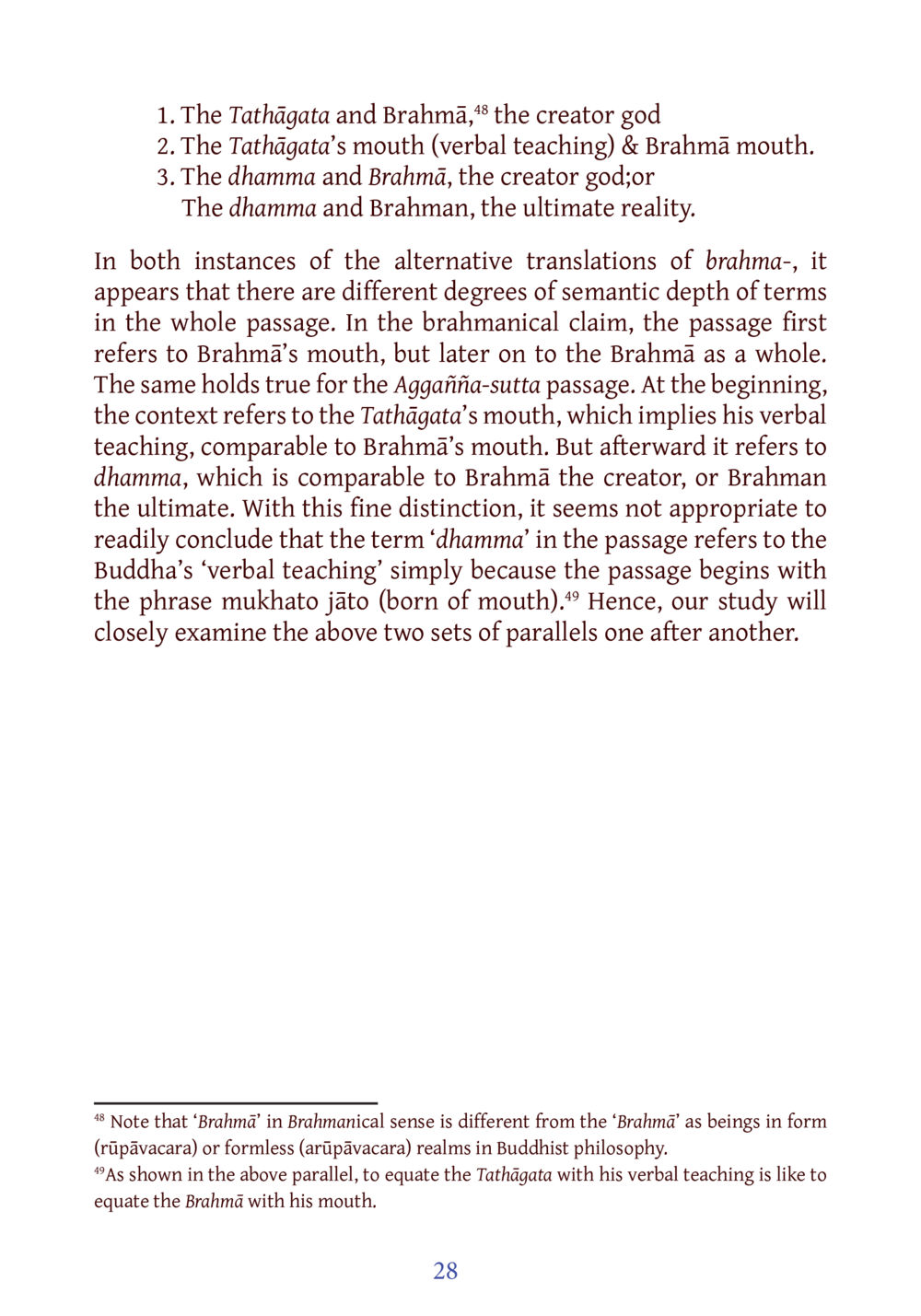The Tathāgata and Brahmā: A Semantic Analysis : หน้า 49/141
DIRI Journal : หน้า 49/141 An exploration of parallels between the Tathāgata and Brahmā, examining verbal teachings and the concept of dhamma in relation to creation.
1 ครั้ง

สรุปเนื้อหา
This passage delves into the nuanced relationships between the Tathāgata and Brahmā, highlighting the semantic layers present in verbal teachings. It contrasts the Tathāgata's mouth with Brahmā's, indicating a parallel between verbal teachings and creation concepts. The discussion extends to how 'dhamma' is referred to in Buddhist and Brahmanical contexts, emphasizing the importance of understanding these distinctions in Buddhist philosophy. Notably, 'Brahmā' refers specifically to the creator god and differs from beings across various realms in Buddhist thought. The text calls for a careful examination of these complexities to avoid oversimplified conclusions about the teachings of the Tathāgata.
หัวข้อประเด็น
-Tathāgata and Brahmā
-semantic analysis
-Buddhism vs Brahmanical philosophy
-dhamma and its implications
-verbal teachings in spiritual context
ข้อความต้นฉบับในหน้า
หน้าหนังสือทั้งหมด













































































































































